For people who loves history or just loves old buildings, then castles are one of most popular remnants of the Middle Ages that are still standing, and are a sure way to travel back in time. Even if you have to use your imagination for a little bit.
But so many people assume that castles are just dark, grey, cold places that would have been miserable to live in back in their prime. Of course, if you are a castle expert then this probably wouldn’t be an issue. But I know that sometimes it can be easy to believe something without really thinking about it first.
Although castles might seem “lifeless” when you visit them (and I use that term lightly, as I don’t think that is the case, as whenever I visit I can clearly see the history behind them), they would have been colourful, warm; comfortable, thriving and just an amazing creation.
Just because the interiors may have rotten away, or walls have fallen down which could create a cold draft. These places would have been spectacular back in their prime, and a lot different to how we see them now.
So here is a list of the 12 common misconceptions that many people get wrong. And yes I have been guilty of a few of them. It would be great to know your thoughts at the bottom, so please leave a comment if there is anything that I have missed out or if you also believed one of the things mentioned below!
12.The Toilets Were Dirty

Although this is probably not something that you would want to think about for too much. The castle toilets, also known as garderobes or latrines, would have had a plank of wood with a hole held on stone supports through which waste would be deposited. They were not as dirty as you would think though!
If you needed to go to the toilet, then you would usually found them in the coldest northern walls on the first floor of the castle (normally at a corner edge). It would also be as far from the entrance as possible (but this was not always the case).
The waste would drop directly out from underneath the latrines, through a cavity, down the wall and onto the ground – for everyone to see! Which is pretty gross, but the “better” castles would have a chute, that would channel the waste down in a more discreet fashion.
Now although they didn’t practice the same degree of hygiene that we do (remember to please wash your hands), they were relatively clean. They knew how to clean themselves up, rubbish had a designated place; the floors were swept and floor coverings were used when needed.
11. Castle Staircases Go Clockwise
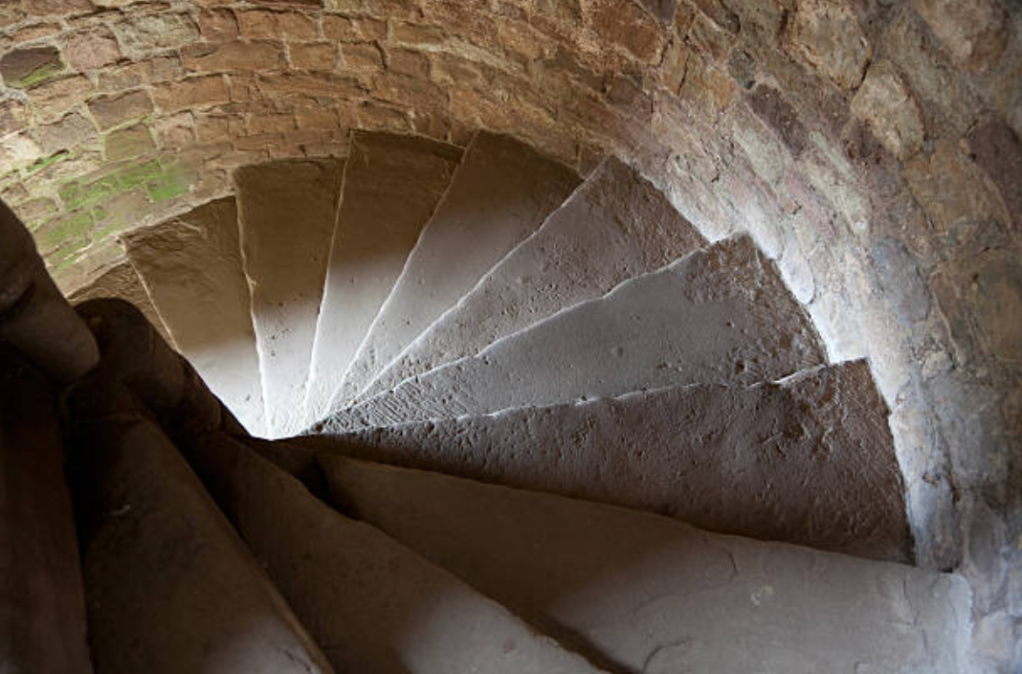
For the people who like to explore castles, then you might have heard the tour guide stating that the staircases always go clockwise. The reason they give for this is because they believe it was designed to give right-handed defenders an advantage. However, there is no evidence to support this.
This idea seems to just be based on speculation and although it is a nice idea, there is little documentation to prove it. Also since there aren’t many sources dealing with castle design, it is a subject that we know little of. But even though we know little of it, there are some staircases that go anti-clockwise.
If you read this study here published by the Castle Studies Group, you will find that there are over eighty-five examples of counter-clockwise newel staircases from castles in England and Wales, that date from the 1070s to the 1500s. So even though they are rare in castles built during the Norman Period, they became more popular later on.
Around the 1240s is when counter-clockwise staircases in castles started to become more common. They are more common in Edwardian castles from the late 13th century and all other castles after that period. So basically counter-clockwise staircases are fairly common in medieval castles – more so than you probably realise.
10. They Are Made of Stone
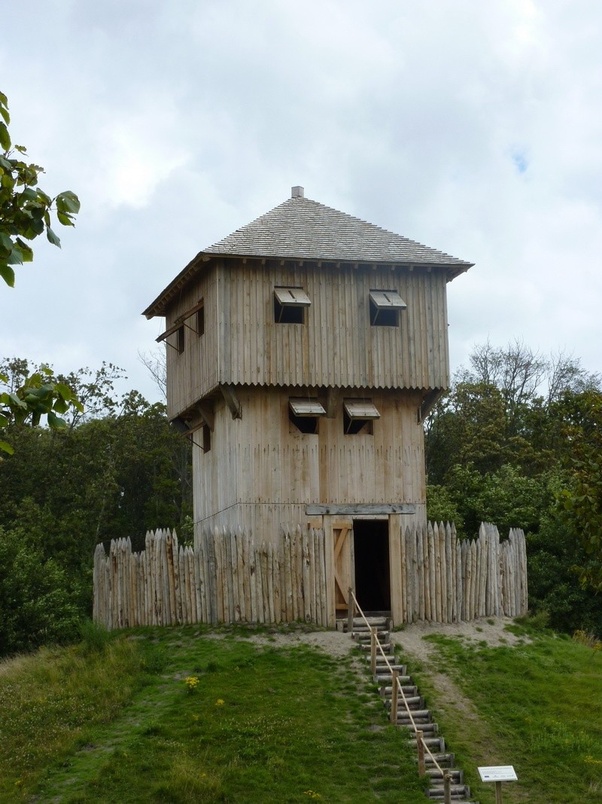
For people who don’t know a lot about the history about castles, then this is an easy misconception to have, as the castles that have survived into the modern age are all made of stone. However, this is incorrect. Wooden castles were a more practical solution to a stone castle, as they were quick and easy to build.
They would have been able to provide some form of security, but obviously the issue with wooden castles is that they would not survive for long periods of time – as shown by the fact that we don’t know how many wooden castles there would have been or how common they were.
What we do know though, is that the first castles were made out of wood. This would have been a motte and bailey style. As time went on though, and technology advanced, these motte and bailey castles were replaced by stone keeps. Eventually this advancement would be the castles that we see now.
But building a stone castle wasn’t an easy job, it was an incredibly expensive thing and it took a very long time to build. For example, York Castle had a wooden keep until 1190, but the stone keep wasn’t finished until the end of the 13th century – that’s a long time to build!
Even the stone castles had parts that were made of wood (the flooring for example), but that has clearly rotten away today. The point is though, that wooden structures were a huge part of building a castle up, and wood was the only way to really complete a castle.
9. They Weren’t Decorated

When you look at a castle, all you can see is the stone wall. But just because we are stuck with this grey and boring image, this isn’t what it use to be. It can be easy to forget that back then, the Middle Ages was full of colour. A castle room wouldn’t be empty like how we see them now.
If the castle was the home of a noble family, then you can guarantee that it would have been decorated with the most luxurious items possible – things like carved wood furniture, wall tapestries, and even elaborate rugs. The rooms would not be bare at all.
A lot of the walls would first be covered in white plaster, as Lords wouldn’t have to worry about walls coming down (since things like cannons didn’t exist). So the rooms would be covered in white, smooth plaster. But then they would paint the walls with bright reds, yellows and blues.
Obviously, plaster doesn’t last as long as stone, so this isn’t something that you will be able to see often. Having said that though, there are still traces of plaster in some castles which you can see if you look closely at the medieval walls – you just have to be lucky enough!
8. They Were Owned By Knights
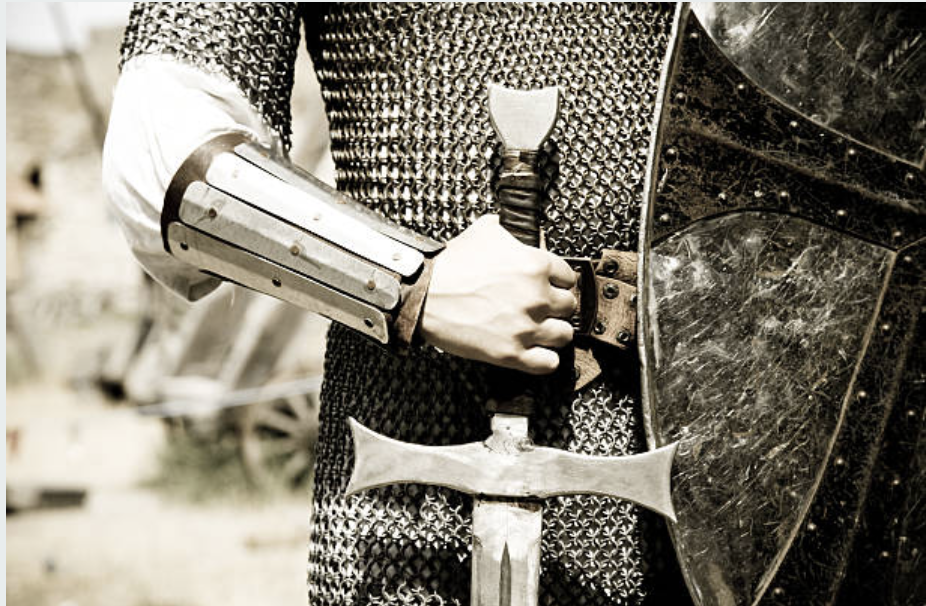
With the idea that all castles were elaborately decorated it’s easy to see why people think that they were all owned by Knights. But a good many castles were actually owned by the Crown. Most castles would have been in areas of strategic importance, rather than a place to call home.
They weren’t empty though, what would have happened is that the King would have sent a castellan to hold them in his name. This would normally be a trusted military officer who was close to the King. They didn’t have to be someone of noble birth either.
One of the best jobs that a lowborn man could aspire to would be the position of a royal castellan. This would have made him a lord in all but name. For people who lived in Wales – where castles commonly had luxuries private quarters this would have been the dream for many people.
7. Lords Could Build Them Anywhere

All castles actually would have been property of the king (thanks to William the Conqueror who wanted complete control over England). Anyone who owned anything actually leased it from the King. This practice was done to make it easy for the King to claim back any “property” off a noble, as they were only “renting” it.
This meant that if someone built a castle it wouldn’t even belong to them. There was a very good reason behind this though, as a new castle was a threat to the monarch. So the English Crown made it a point of law that to legally fortify a residence, a lord had to hold a License to Crenellate.
This is pretty similar to getting a housing extension like you would today. So if a nobleman would have wanted to build a castle back then, he would have had to apply to the royal court of a License to Crenellate. This wasn’t an easy thing though, as the monarch only issued a handful of these, and he was normally busy doing over things.
6. They Were Surrounded By Moats
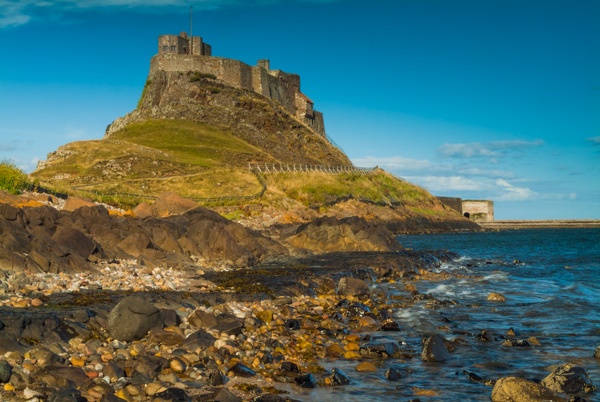
As a child, you probably found that anytime you drew a castle you probably drew a moat around it (and maybe some occasional crocodiles if you were imaginative). Moated castles obviously do exist, but many are faux-medieval mansions built in the early modern era.
Although a moated castle does make for a very picturesque fairy tale image of a castle, a moat just wasn’t practical, particularly one that was full of water. A moat full of water also made the castle easier to attack. On the other hand, dry moats (moats without water), were much more common.
The only reason a moat would have been added would have been if the castle was built on low ground and a moat would have made it harder to get siege equipment closer to the castle, and the walls would have been a lot harder to climb from the bottom of the moat.
But at the end of the day, moats just weren’t needed. Most castles would be built at the tops of hills, as they served as vantage points, so having a moat at the top of a hill just doesn’t make sense.
The only time a moat would have been needed, is if there was a part of the castle that wasn’t defended by the natural terrain. Just take a look at Harlech and Warwick castle. They both have wide ditches which are used to help protect areas that can’t use the natural environment.
5. They Had Dungeons
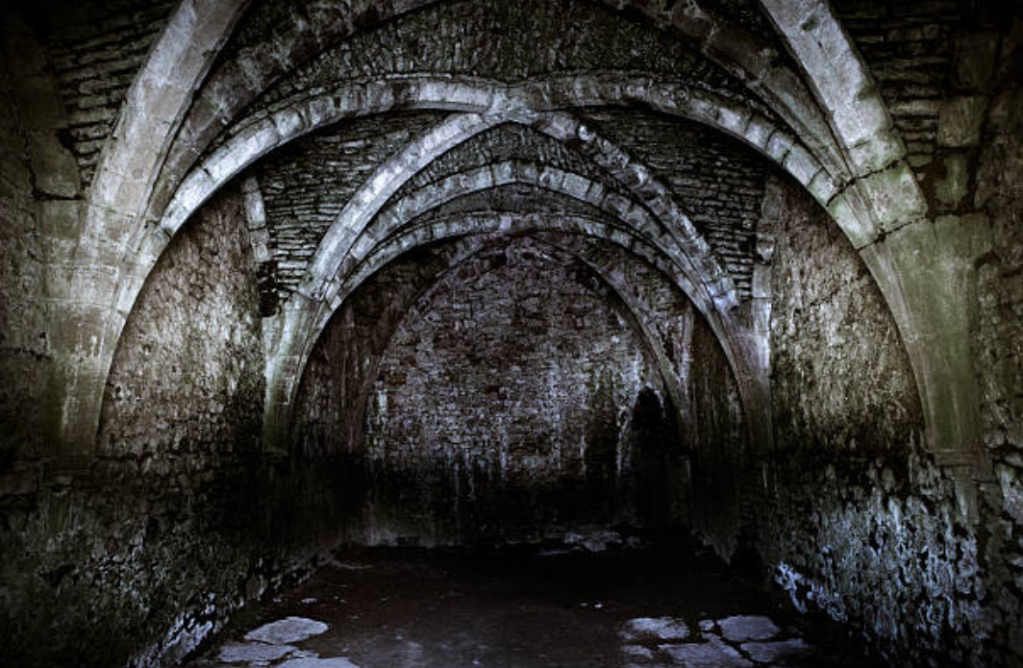
One of the most infamous and terrifying misconceptions about castles is that they all have dungeons, hidden away beneath the castle. But the dungeons that many people think of are not quite how it would have been back then.
If you had asked a castle-dweller where the don-jon was, they would have pointed upwards. This is because in Old French the term don-jon meant the “great tower”. Back then, medieval people probably didn’t know about locking people up in the dungeons as punishment. They would only keep people in captivity (e.g. wealthy prisoners during war time).
Strangely enough, despite one of my favourite books being about a woman locked up in a tower (it’s called the Lady in the Tower by Marie Louise Jensen, and you can read my review here), I am guilty of assuming that castles have dungeons underneath the castle.
I don’t feel too bad about thinking this though, because as the Middle Ages went on, castles became more complex and luxurious so it was more common to have prisoners and keep them in the lowest floor of a tower – a room without windows.
So a dungeon soon evolved into a dark, nasty place of confinement, which is what we know it as.
4. The Castle Was One Unit
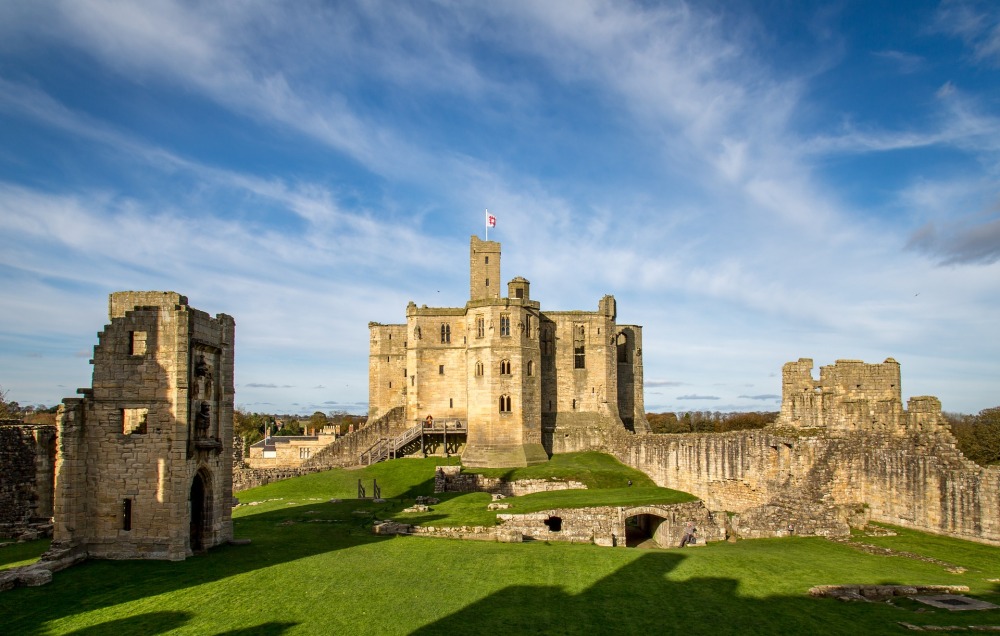
If you know little about the medieval society, then the main thing to note is that a peasant was a peasant, a noble was a noble and the two could never swap places. But men and women of different social classes all shared the same space, even sleeping in the same hall in some castles.
Although this seemed to be the norm, when we look closer at the medieval lifestyle involving the social classes, we can see that castles are highly stratified places. Just look at Conwy and Chepstow castle. They both have inner courtyards which were set aside for the monarch’s use.
The courtyard would have been disused when the king was not in residence. It didn’t have to be a separate keep though, at Harlech, the entire upper floor of the gatehouse would have been the sole residence of the king or castellan.
So as you can see, it wasn’t always the case that everyone slept in the same room, the lords, castellan or king did end up with their own space. In fact, at Harlech, they also had the most fireplaces in their living quarters compared to the rest of the castle.
3. They Were Cold

Of course, fireplaces were a must in a castles, so even if the lord or the king had the most fireplaces, it was common for castles to have multiple fireplaces. This was much needed, as stone castles were bad insulators and they were often built in high up places.
Obviously when you are exploring around a castle now, the fires won’t be lit and because the rooms are empty it can feel a lot colder than it would have been. When you explore around the castle, you will also notice that the fireplaces are a lot larger than the ones we see in our homes today.
We also have to remember that they had narrow windows and extremely thick walls. So you can see why an evening spent in the great hall, with a huge fire that had been burning all day, and dozens of people in the room, would have been easy for the rooms to be warm!
2. The Great Hall Was For Feasting
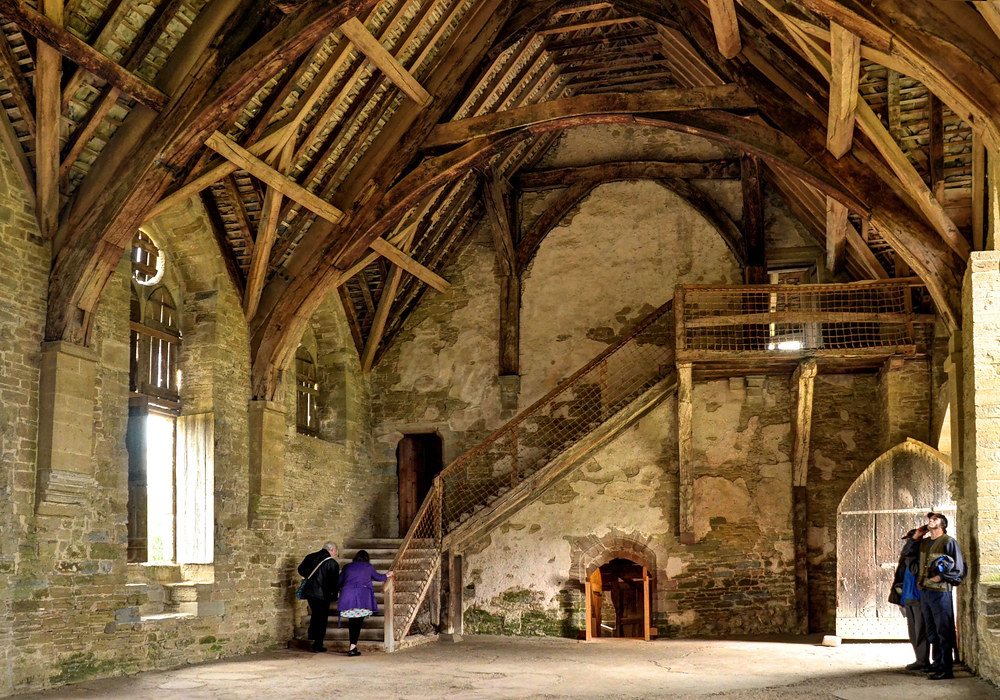
Moving on slightly from the misconception that castles were cold, it is easy to see why the Great Hall was the heart of the castle. In most people’s mind it is only used for a feast, but it was the heart of the castle. It was where councils were held, food was eaten, music was listened to, and in some castles it was where everyone slept.
You might have also noticed that most castles are missing a military building: barracks. So, unless they had a huge garrison, the soldiers and staff who lived in the castle on a daily basis would have slept in the Great Hall. Unless of course, the castle needed a large garrison, then they would have slept in tents outside. But this wasn’t a normal thing.
1. They Had Large Garrisons
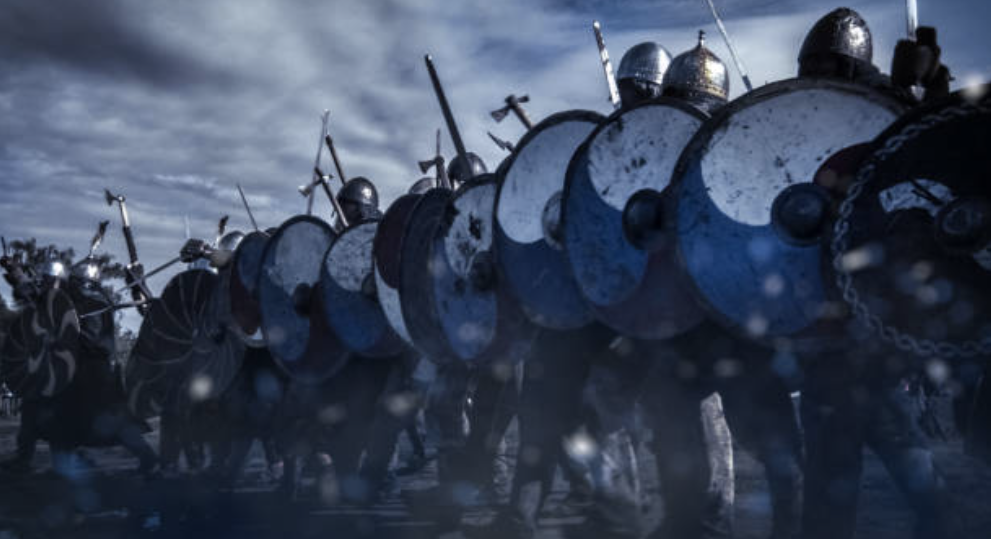
So as previously mentioned, it wasn’t a normal occurrence for castles to be heavily guarded with a large garrison. This is one of the biggest misconceptions that people have about castles. Most of the time, the castle was not nearly as well-garrisoned as we might expect.
The most well-defended castles would be the ones that lay along the Welsh and Scottish borders, but even then they would only have around 200 men in them at a time. Most castles would have been private residences, and the main defences castles would be the ones on the border in case of an attack.
Of course, castles could have a few dozen soldiers if they wanted, but it wasn’t unusual for them to have none at all. This was because there was no need for them. Having a large garrison would have also meant more food would have been needed to be consumed, space to be taken up and it just would have been a waste.
So there you have it – the 12 common misconceptions that people have about castles! Are there any that you believed or are there any that have surprised you?
Let me know in the comments below!

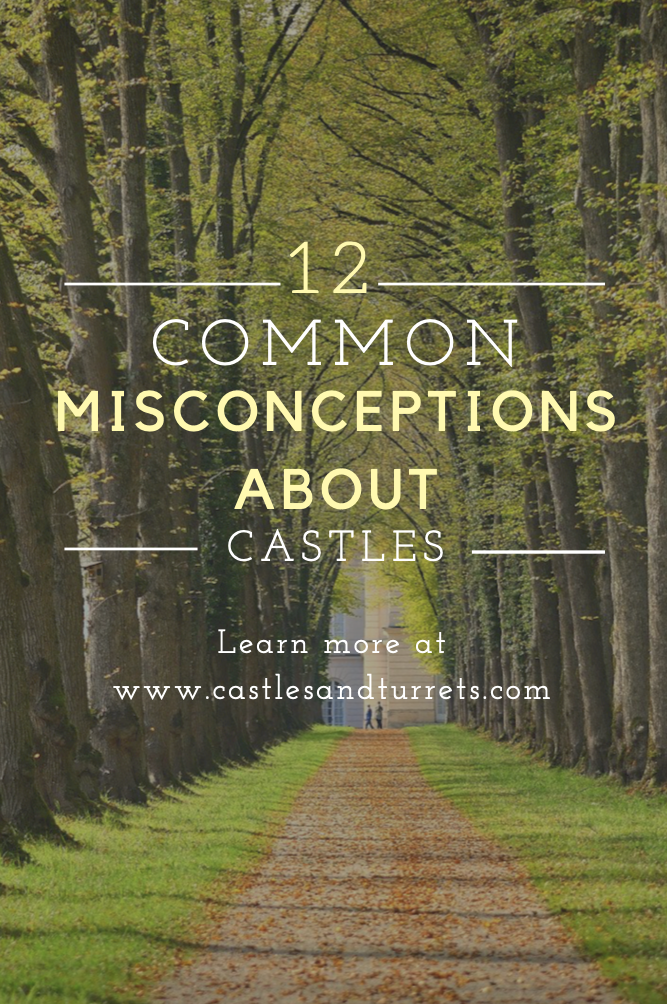
I absolutely loved reading this!! I’m a history addict, and I love castles, and have learned so much from reading this. It’s great!
LikeLiked by 1 person
That’s great to hear! Nice to meet another history addict as well, thanks for taking the time to read this 🙂
LikeLike
This is one of the most interesting posts I’ve read all week. And learned stuff too, yay!
LikeLiked by 1 person
That’s brilliant, I’m glad you found this post educational. A lot of misconceptions that people have, but it’s easy to see why!
LikeLike
Wow, what a tremendous post, I’ve learnt so much from this, and I would agree on some of the misconceptions that you’ve mentioned here, the only misconception, I’ve got to ask is why are castle windows so tiny, is there a specific reason for this! I really enjoyed this post and you’ve delivered so much information. Thank You! Xx
LikeLiked by 1 person
I suppose they weren’t really how we see windows today. If a window was big, then that was an opportunity for the enemy to shoot an arrow through, so a smaller window helped keep people safe inside. At least that would be the case for the windows on the outside walls of a castle.
You could have larger windows on the inside facing the courtyard, as this would be a natural way to let light in, and also get rid of any smoke from the fireplaces. They wouldn’t want to build massive windows though either as that would just let all the heat out x
LikeLiked by 1 person
I love reading this, I’ve always thought they built dungeons to punish people but it’s awesome finding out I was wrong. Great post. Learnt so much from this post
LikeLiked by 1 person
Yeah that’s one of the biggest misconceptions that people have (I also believed this), but it’s interesting to learn new things! Still incredibly fascinating places to visit though 🙂
LikeLiked by 1 person
What a great post! I’ve learned so much. Who would guess that the dungeon was up the tower? Castles are so magical. Thanks for sharing all this info.
LikeLiked by 1 person
Yeah everyone always thinks that people got locked up in the dungeons underneath the castle, but that wasn’t the case. Until recently that was something I believed. I always wondered why so many castles never had dungeons but now it all makes sense!
LikeLiked by 1 person
I thought the same 😉
LikeLiked by 1 person
It’s nice knowing I wasn’t the only one haha!
LikeLiked by 1 person
Fantastic post! I have learned so much. This was really interesting and informative. I really enjoy visiting castles, but I didn’t know some of the things you’ve explained in this post. Thank you for sharing! 🙂
LikeLiked by 1 person
That’s great to hear! Castles really are amazing, there’s so much history behind them and they are just brilliant places to explore!
LikeLiked by 1 person
Such an interesting read, thank you for sharing! I love castles and wherever I travel I always locate a castle to explore. I like to imagine what life might have been there once upon a time. The staircase thing is something I will be paying special attention to from now on 😉
Teresa Maria | Outlandish Blog
LikeLiked by 1 person
I’m the exact same – every time I visit a castle or a historic place I like to imagine what life would have been like back then! The staircase thing was really cool to learn to be fair, I’ve always thought they go anti-clockwise to help right-handed people defend themselves, but that was clearly just a lovely myth. Pretty cool though!
LikeLike
I will admit that I have been guilty of many of these misconceptions over the years. For a long time, I fully subscribed to the idea of basement dungeons until I came across some information about locking prisoners in a tower a few years ago. It was an eye-opener! This is the first time I’ve read about the great hall. I will admit that I have always associated that with meal time.
LikeLiked by 1 person
I always assumed about the dungeons as well, which is weird because one of my favourite historical reads is about Lady Hungerford who got locked up in a tower. It never clicked that that was because dungeons weren’t really a thing – guess I’d just grown up with the idea. Love learning new things though!
LikeLike
Great post! Thank you for sharing this and solving some common misconceptions. This was very interesting to read!
LikeLiked by 1 person
Glad you found it interesting! It was a really fun post to write and research about, got to love a bit of history!
LikeLiked by 1 person
This was such an interesting post! I definitely agree that there’s a lot of misconceptions about castles. Probably because of Disney or Fantasy movies portraying them in a certain way!
LikeLiked by 1 person
That actually makes sense. I loved all things Disney as a kid (still do), but it’s no wonder we perceive things the way we do because of how films and things show them as. Although now I kind of want to do a Disney film marathon haha!
LikeLike
So neat! I thought many of these misconceptions were true but it was so interesting learning about them. The info about the dungeon is super cool and it’s crazy that back then it meant a tower instead!
LikeLiked by 1 person
Yeah, that’s one of the main misconceptions that people have and even though I’ve been visiting castles since I was a child, but it took a long time for me to learn what was actually true!
LikeLike
Thanks for sharing, these misconceptions are very interesting as I did know them, as they don’t tell you these facts when you visit castles, maybe in textbooks but not actually at the place 🙂
LikeLike
Yes I agree, they probably would be easily cleared up by reading a textbook, but when visiting it’s not something that is always made clear – still doesn’t change the fact that castles are just incredible things!
LikeLike
What a great post! It was only a few years ago I learned about wooden castles, you don’t see any of them in the movies 😂
LikeLike
Haha that is true, you don’t see many of them in the movies so it’s easy to see why people think they were always made of stone!
LikeLiked by 1 person
This was very educational! I am guilty of believing almost every one of these!
LikeLike
It’s something which is very easy to do! There are loads of misconceptions out there about castles, I know that I believed a few of them myself – I probably still have a lot to learn though!
LikeLike
Great post!
LikeLiked by 1 person
Thank you!
LikeLike
This is so interesting! Literally didn’t know about half these things! I’ve never even thought that castles could’ve been made out of wood but now youve said it, it makes so much sense why there wouldn’t be any evidence of them! Also the dungeon one, that’s crazy ! Feel like I’ve been so misled by popular media hahaha thanks for sharing!
LikeLiked by 1 person
Yeah for a long time I always thought they were stone because that was all we could see. But it does make sense, I mean stone castles would have taken years to build, but a wooden castle was a lot quicker! The dungeon thing is one of the most common misconceptions out there, but like you said that’s the media for you!
LikeLike
I love these 12 misconceptions, a lot that I held myself! I do love Castles though and always try to take in as much info as I can when we visit them.
I think after reading this, I’ll view castles slightly more open minded.
Thanks for sharing x x
LikeLiked by 1 person
I always learn so much whenever I go visit them, it’s a great way to learn about history. I still have a lot to learn though, but it’s something which I’m quite excited about as castles are just amazing things!
LikeLike
wow I guess I knew nothing about castles before! Lol! Great post!
LikeLiked by 1 person
Haha thank you!
LikeLike
Oooh I love this! I love visiting castles, but there are a few things I didn’t know here!
Love, Amie ❤
The Curvaceous Vegan
LikeLiked by 1 person
I always learn something new every time I go and visit a castle, there’s so much history that surrounds them! I’m still learning though!
LikeLike
Great post! I really enjoyed reading this. It’s very informative and interesting and I’ve always loved castles! Thanks for sharing.
LikeLiked by 1 person
Thank you! This was a really fun post to write about, but I tried to make sure it was also informative for people. There’s a lot more to castles then people realize!
LikeLiked by 1 person
This is such a great post! I love learning about history but I don’t have a whole lot of castle knowledge. This post made me realize the misconceptions I have about castles and I learned a bunch of new things! Thank you so much for posting this!
LikeLiked by 1 person
You’re welcome! There’s so much to learn about castles, but even with these misconceptions they are still amazing places!
LikeLike
I absolutely love this post!! I cannot wait until we can travel again… Thank you for sharing! I learned a lot.
LikeLiked by 1 person
Thank you! Hopefully you get to travel again soon, would be good for things to go back to normal
LikeLike
Super interesting! I had no idea about a lot of these – I can’t believe their waste just dropped to the ground in most. 😬
LikeLike
Haha yeah it’s pretty gross, but thankfully things have changed!
LikeLike
I love history, especially when it has facts included. Thank you for this informative post.
LikeLiked by 1 person
You are welcome! I’ve always loved visiting castles, but it’s so much better when you can learn the facts around them. Makes things much more interesting!
LikeLiked by 1 person
Great informative post! The origin of ‘dungeon’ especially I never would have guessed.
LikeLiked by 1 person
Thank you! Yes that’s always a surprising fact that most people don’t know – it’s pretty cool though haha
LikeLiked by 1 person